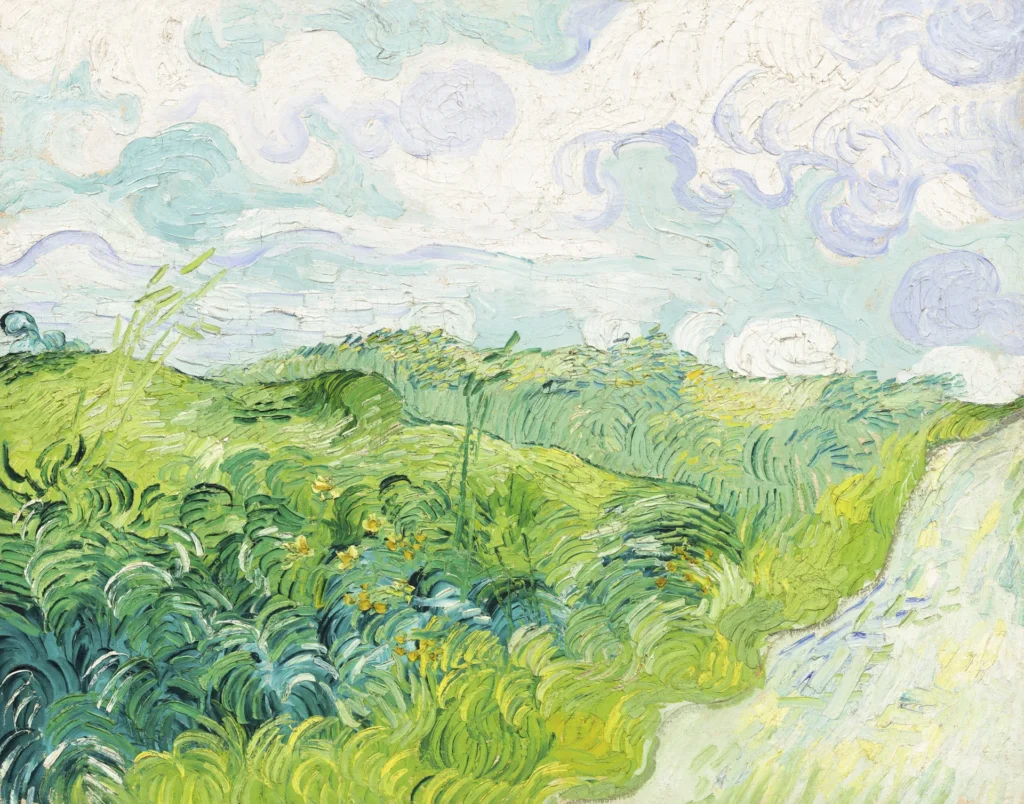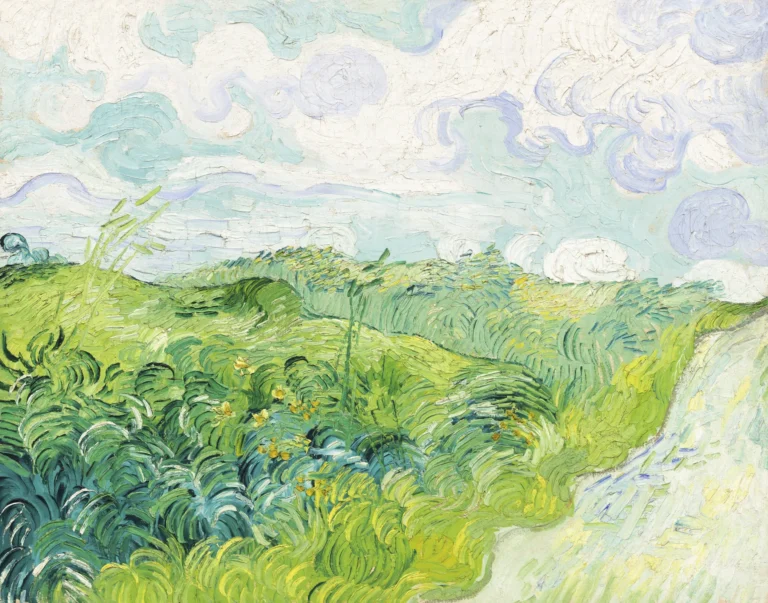Green Wheat Fields, Auvers (1890)
Green Wheat Fields, Auvers is a poignant landscape painting by Vincent van Gogh, created during his final months in Auvers-sur-Oise. Depicting an expansive field of vibrant greens and yellows, the work reflects Van Gogh's distinctive impasto technique and emotional depth. Notable for its absence of figures and buildings, the composition emphasizes nature's dynamic beauty, exemplifying the artist’s return to serenity through his brushwork. This masterpiece encapsulates a critical moment in Van Gogh's artistic journey, showcasing his deep connection to the rural landscape amidst his internal struggles.
May 1890
About the Artwork
The journey of Green Wheat Fields, Auvers unfolds in the context of Vincent van Gogh’s tumultuous life in the spring of 1890. After a period of mental unrest and treatment at the asylum of Saint-Paul-de-Mausole, Van Gogh sought solace in the serene village of Auvers-sur-Oise, just north of Paris. During these final months, he experienced a profound creative surge, returning to the landscape that inspired him. This painting represents not just a visual delight but also an emotional catharsis, capturing the essence of nature’s purity and the artist’s quest for peace. Painted with vigorous strokes and a vibrant palette, it illustrates Van Gogh's signature style—a blend of turbulence and tranquility that resonates deeply with viewers. Today, it resides in the National Gallery of Art, where it continues to evoke admiration and reflection.
Did You Know
Liked what you see? Add it to your collection.
Enjoyed reading? Share it.
... continued
Composition and Style
The painting is characterized by its focus on pure flora, with two-thirds of the composition dedicated to a field of wheat in a rich range of greens and blues, punctuated by outbursts of yellow flowers. It lacks the rural figures, stony walls, wooden carts, and rustic buildings common in many of Van Gogh's other landscapes. Instead, it emphasizes the movement of grassy stalks in the breeze and the turbulent clouds overhead, captured through Van Gogh's energetic and long calligraphic brushstrokes applied in thick impasto.
Historical Context
Van Gogh painted Green Wheat Fields, Auvers after his voluntary confinement at the asylum of Saint-Paul-de-Mausole in Saint-Rémy. He moved to Auvers-sur-Oise in May 1890, where he continued to paint until his death two months later. This period is known as his Auvers period, marked by a return to cooler, gentler hues in green and blue, which he described as a kind of homecoming and a peaceful restoration of his mental state.
Provenance
The painting has had several owners since its creation. It was initially in the possession of Theo van Gogh, Van Gogh's brother, and later passed through various collectors, including the Paul Cassirer Gallery in Berlin and the Hermann family. It was purchased by Paul Mellon in 1955 and remained in his collection until it was bequeathed to the National Gallery of Art in 2013, following the release of the life estate held by his wife, Rachel Lambert Mellon.
Current Location
The painting is now part of the collection at the National Gallery of Art in Washington, D.C., where it is displayed in the West Building, Gallery M-83.
Dimensions and Medium
Green Wheat Fields, Auvers is an oil on canvas painting, measuring 72.3 cm (28.5 in) in height and 91.4 cm (36 in) in width.
Significance
This painting is considered one of Van Gogh's most important landscapes and represents his signature style, marked by lush impasto, energetic brushwork, and vibrant color. It relates strongly to other works by Van Gogh, including his pen and ink drawings from 1888, in its rhythmic marks and representation of nature's unifying energy.










